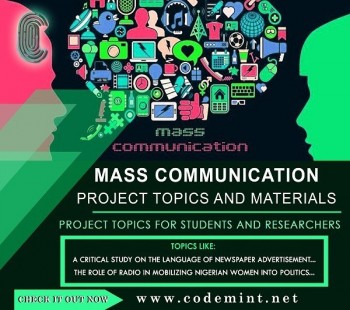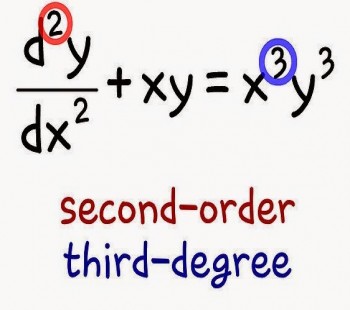For every academic discipline or faculty, there are required procedures which guide the structure, organization and presentation of academic papers. Although it may not be entirely uniform, the variations will be very little, if at all there is any. So in presenting final year project research in mass communication, the under listed should be able to guide undergraduate project students in this field.
Chapter one: introduction
Background to the study: mass communication project students are expected to discuss the issue on ground that has informed the research, either short term or long term; taking space to explain key concepts and central ideas in the study.
Statement of the problem: Like the name implies, the issue(s) that particularly prompted the research is captured and stated clearly and in very short prose.
Objectives of the study: Usually while stating the research objectives, the central objective should be stated in one sentence followed by serial numbering of the specific objectives. The serial numbering is usually preferable in roman numerals. The project research objectives is usually stated using words like to determine, to ascertain, to assess, to examine, to find out, to justify, to compare, etc.
Research questions: The research questions are often framed from the research objectives; it follows the serial arrangement of the research objectives aswell. However, it uses interrogatory words like, what, why, how, who, where etc.
Research hypothesis: A hypothesis in a typical mass communication research is a statement or critical claim you make which the researcher would confirm or withdraw after analyzing the research findings.
For example: There is significant relationship between students and the use of virtual reality in education.
That’s a hypothesis, and to prove this statement, the research finding in chapter four will confirm or nullify the hypothesis. A hypothesis is only to be applied where necessary; not all mass communication project topics require a hypothesis.
Delimitation of the study/ Scope: A typical mass communication research project is expected to state specifically the boundaries the research intends to reach. While this is so, students are also to state which area of the topic the research isn’t going to touch.
Operational definition of terms: Like in every other discipline, mass communication researchers are to define terms in the context of the study i.e. the very way they will be used throughout the research. Whatever definition you give to a concept, that’s what it is in the research only.
For example: communication is the exchange of information with radio listeners.
This definition may seem wrong ordinarily but for the sake of the research, it is totally right because it is defined operationally.
Chapter two: review of related literature
As a millennial researcher, review of current related literature is very necessary; resurrecting old theories and stale ideas is uncalled for. The subheads under this segment include;
Review of concepts: You are to review the relevant key concepts in your research project topic i.e. the variables and other complementary terms.
Review of opinion: Specifically, you are required here to review published opinions in text books or journals citing the sources very accordingly.
Review of studies: Here you are to study previous projects that have been done on related topic that you are studying. It could be a Ph.D. work, an undergraduate works or so. Be sure it is related; then state the topic they actually studied, the year, the findings, their recommendation and how it affects your own research. Three to five related studies are expected to be reviewed.
Theoretical framework: You need few communication theories, usually two or three to back up your research.
Chapter three: research methodology
This chapter requires a short and concise description of the procedures for data gathering and analysis. So you would clearly state;
· the research technique eg. Survey, content analysis, case study, interview etc.
· population of the study i.e. the group you want to study eg. Television viewers, radio listeners, newspaper readers, state newspapers, social media users, students etc.
· sample size i. e. a manageable segment of the population of study that you will actually understudy. It is recommended to choose a manageable sample size.
· Description of the research instrument; state the instrument you will use to gather data fo your research and defend why it is necessary for your research topic. Some instruments include questionnaire, coding sheet etc.
· Method of data collection i. e. how the instrument fr data gathering was distributed, the number of copies distributed (for survey), the number of copied collected and the number of copies that were not returned.
· The method of data analysis should also be stated
Chapter four: data presentation, analysis and discussion of findings
Data in mass communication is preferably presented in tables, with each table giving a clear data on each research question or as contained in the research questionnaire. Some lectures get irritated about what they call “table reading” i.e. repeating the contents on the table on prose form. So be mindful of what is expected of you in your institution and follow accordingly.
Discussing the research findings, you must relate it to previous studies or opinions to complement your findings; taking time to interpret its significance in mass communication studies.
Chapter five: summary, conclusion and recommendations
As simple is they sounds that exactly how they apply. Give a summary of your entire work in one or two paragraphs, state the conclusions or resolution you made from your research findings and state your recommendations outlining them serially in roman numerals.
References: You can’t possibly skip this; follow the current style recommended for referencing in your institution for the best outcome.






